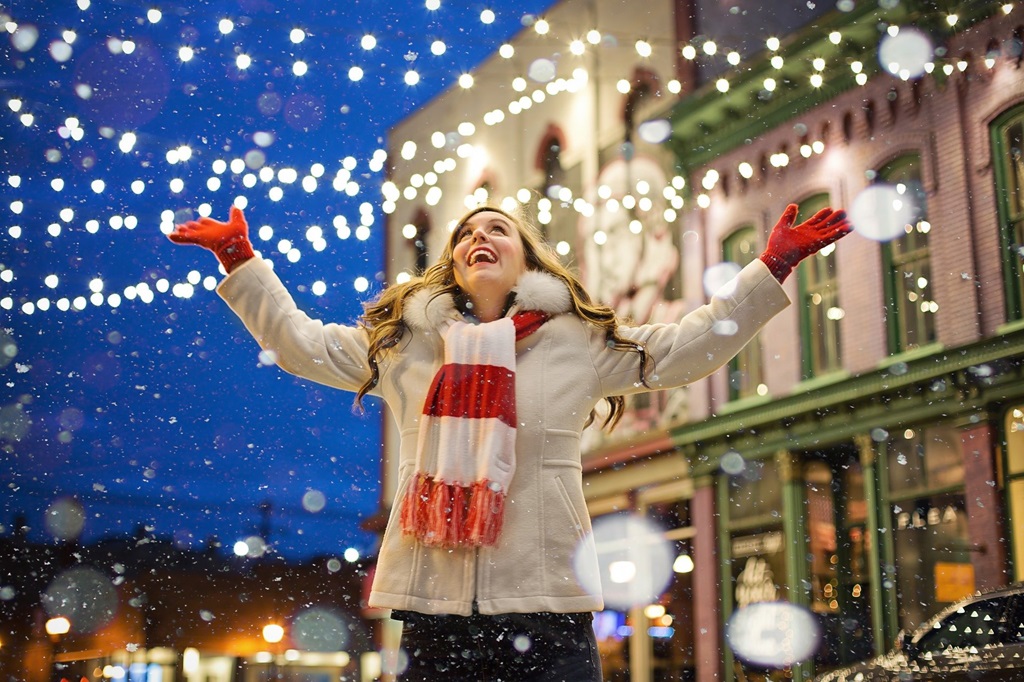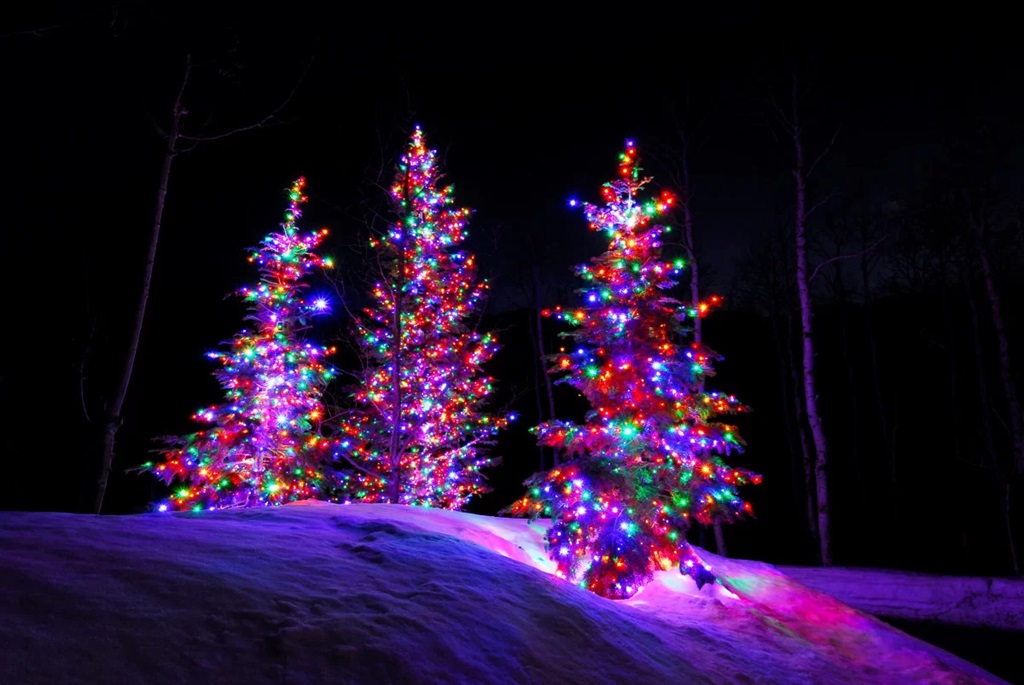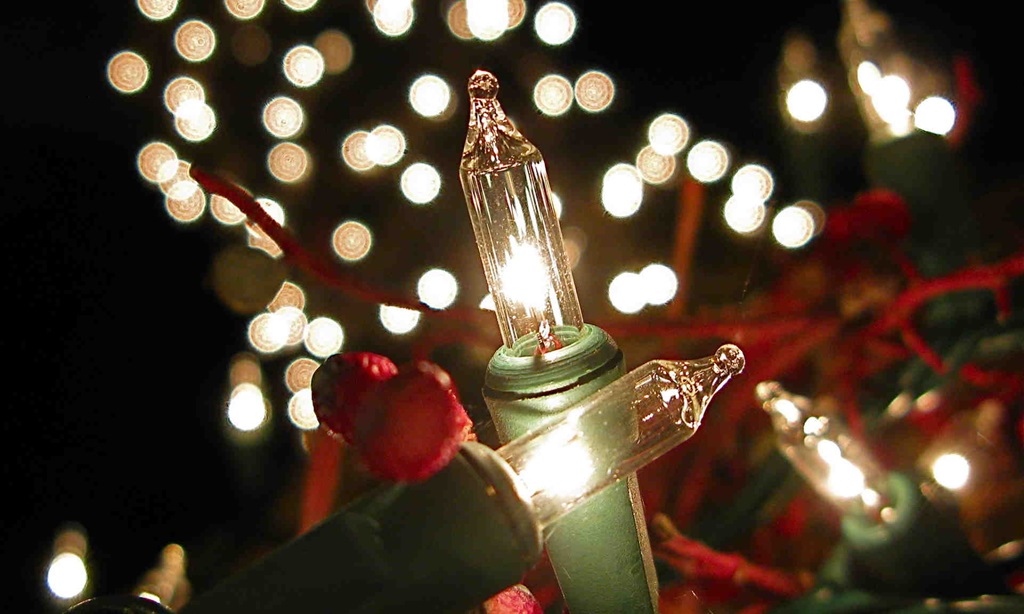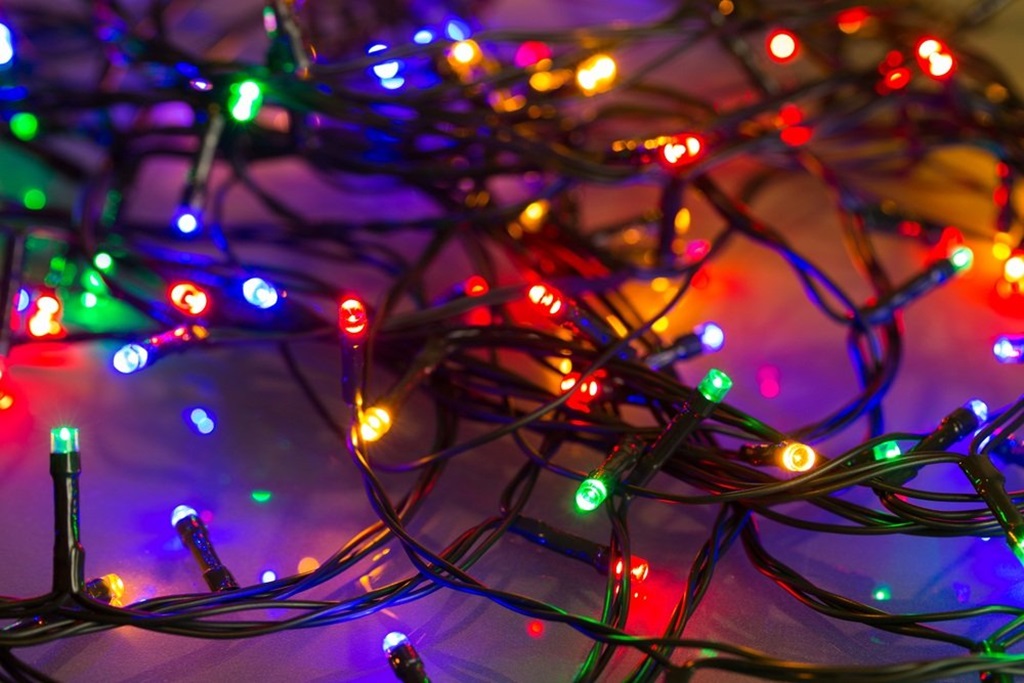
12 Feb LED vs Incandescent Christmas Lights: A Detailed Comparison
The debate between LED and incandescent Christmas lights has continued for years. Both have pros and cons regarding brightness, energy use, longevity, and cost. LED Christmas lights are becoming more popular as LED technology improves and prices drop. But are they suitable for your holiday display?
This detailed comparison looks at all the factors you should consider when choosing between LED and incandescent Christmas lights. Read on to learn led vs incandescent Christmas lights and decide which type best fits your needs and budget this holiday season.
Led vs Incandescent Christmas Lights
| Feature | LED Christmas Lights | Incandescent Christmas Lights |
| Brightness | Very bright, crisp light. Full-color LEDs have 16 million color options. | Warm, glowing light. It is only available in white shades. |
| Energy Use | Use up to 90% less energy. One hundred lights use 30-40 watts. | Very inefficient. One hundred lights use ~200 watts. |
| Lifespan | It can last over ten holiday seasons. Durable. | It typically only lasts 1-2 seasons. Fragile glass bulbs. |
| Upfront Cost | $20-$50 for 100 lights. Advanced color changing over $100. | $5 for 100 lights. C7 and C9 bulbs less than $10. |
| Convenience | Low voltage for safe outdoor use. Connectable up to 190 ft. Color changing and patterns. Smart home compatible. | 120V outlets required. One 50-100 light string per outlet. No colors or patterns. Not smart enabled. |
| Environmental Impact | Lower energy use reduces carbon footprint. Long life means less waste. | High energy use increases emissions. Short life means more waste. |
Brightness and Appearance
One of the most significant considerations when purchasing Christmas lights is their brightness.
Here’s how LED and incandescent bulbs compare:
LED Brightness
- LEDs produce a very bright, crisp light.
- The minor point-source nature of LEDs can sometimes make the bulbs look dotty or pixelated from a distance.
- Full-color LEDs mix red, green, and blue light to produce over 16 million color options.
- Single-color LEDs come in a variety of hues, including warm white, pure white, yellow, red, green, and blue.
Incandescent Brightness
- Incandescents produce a warm, glowing light that can be aesthetically pleasing.
- The light is omnidirectional, so the bulbs have uniform illumination.
- Incandescents only come in white shades ranging from warm to cool.
So, if you prefer the classic Christmas light look and incandescent warmth, go with incandescent. But LEDs are the better choice if you want super bright, energy-efficient lights with color options.
Energy Use and Costs
Another major factor in the LED vs incandescent debate is energy efficiency.
Here’s how the two options compare:
LED Energy Use
- LED Christmas lights consume up to 90% less energy than incandescents.
- A 100-light LED string uses about 30-40 watts compared to 200 for incandescent.
- These energy savings add up to lower electricity bills during the holiday season.
Incandescent Energy Use
- Incandescent lights are inefficient – only about 10% of energy produced light.
- The rest is wasted as heat, which is why incandescent bulbs are so hot to the touch.
- Higher energy use leads to substantially higher electricity costs to run them.
Over the lifetime of the lights, LED Christmas lights are clear winners regarding energy efficiency and costs. And given rising energy prices, the long-term savings are significant.
Lifespan and Durability
No one wants to deal with burned-out bulbs every year when decorating, so the lifespan and durability of Christmas lights are key.
LED Lifespan
- LEDs can last up to 10,000 hours or more of use.
- 6 hours per day during the holidays can easily last over ten seasons.
- The solid-state nature of LEDs makes them highly resistant to vibrations and drops.
Incandescent Lifespan
- Incandescent lights last around 1,000 hours or less.
- They may only make it through 1-2 holiday seasons before burning out.
- Their glass bulbs and filaments are fragile and prone to breakage.
LED Christmas lights’ exceptionally long lifespans make them a clear winner in terms of durability. Once purchased, you may never need to replace them again!
Upfront Costs
There’s no question that LED Christmas lights are more energy-efficient and durable than incandescent. But they also have a higher upfront cost.
LED Light Costs
- A 100-light LED string typically costs $20-$50.
- The most advanced color-changing LEDs go for over $100 per string.
- Buying enough lights to decorate a tree and home gets expensive.
Incandescent Light Costs
- You can buy a 100-light incandescent string for as little as $5.
- Even the nicer incandescent C7 and C9 bulb styles cost less than $10 per string.
- You can decorate extensively for very little money.
So, while LED options save money in the long term, the short-term costs may be prohibitive for larger displays. If your budget is tight, cheaper incandescents may make sense.
Convenience and Features
Along with the essential factors above, there are some convenience and feature differences between LED and incandescent Christmas lights.
LED Convenience and Features
- They come in low-voltage varieties for safe outdoor use.
- Many are connectable end-to-end up to 190 feet.
- Colors can be remote-controlled or set to dim, strobe, or chase patterns.
- Integrate with smart home platforms like Alexa or Google Assistant.
Incandescent Convenience and Features
- Require 120-volt outlets and may need outdoor covers.
- You are limited to one 50-100 light string per outlet.
- Only produce fixed white light – no colors or patterns possible.
- It’s not smart home compatible.
LED lights offer a lot more possibilities in terms of light shows, effects, and connectivity. Just be aware of the limitations controlling full-color versus single-color bulb strings.
Environmental Impact
For the environmentally-conscious, LED Christmas lights are the greener choice.
LED Environmental Benefits
- Use less energy and no toxic materials, reducing carbon footprint.
- It lasts longer and is less likely to end up in landfills.
- Allow decorating brightly while staying energy efficient.
Incandescent Environmental Impact
- Require a lot more electricity, increasing greenhouse gas emissions.
- A short lifespan leads to frequent disposal and waste.
- It is not an eco-friendly choice for excessive lighting displays.
So, if you want to decorate responsibly for the holidays, choosing LED lights is the way to go. They align better with sustainability goals while still allowing festive lighting.
Choosing What’s Right For You
Here are some quick tips when deciding between LED and incandescent Christmas lights this holiday season:
- If you want multicolor effects, go with full-color LEDs.
- For a traditional soft white ambiance, choose incandescents.
- If energy costs are a concern, LEDs cut usage substantially.
- For larger displays, inexpensive incandescents may make sense.
- If convenience like connecting strings or controlling colors via smartphone is desired, choose LED.
- For green-conscious folks, efficient and long-lasting LEDs are the pick.
Take the time to evaluate both options against your specific needs and priorities. The lighting choice that’s best for your neighbor may not suit you. Weigh the pros and cons carefully to ensure your home shines bright this holiday season while fitting your budget!
Conclusion
When deciding between LED and incandescent Christmas lights, several factors exist, from brightness to costs to convenience. LEDs are unmatched in terms of energy efficiency, longevity, and features. But incandescents can make sense when pursuing a traditional lighting look or shopping on a budget. Carefully weigh all the pros and cons against your specific display goals and needs. And be sure to check that the lights you select are designed for safe, long-lasting outdoor or indoor use as appropriate.
FAQs
Are LED Christmas lights safer than incandescent ones?
Yes, LED holiday lights are much safer. LEDs run on low-voltage electricity, do not heat up like incandescent, and are made from durable plastic instead of breakable glass. This makes them much less likely to cause fire hazards or injuries.
Do LED Christmas lights get hot?
No, LED Christmas lights do not get hot like incandescent bulbs. The plastic bulbs stay cool to the touch even after being on for many hours. This makes LED strings safer for decorating kids’ rooms, outdoors on bushes, or anywhere delicate materials are present.
Do LED Christmas lights look cheap?
While early LED holiday lights did have a “cheap” look due to the visible individual diodes, modern LED strings have a very polished appearance. With opaque bulbs that diffuse the light smoothly, LEDs look elegant and crisp. Quality full-color LEDs especially have an expensive high-tech aesthetic.
Are clear or multicolor LED Christmas lights better?
It depends on the look you prefer. Clear LEDs provide a clean, monochromatic look in the chosen color, while multicolor strings can be set to morph between various colors and patterns. The right choice comes down to your decorating style.
How do you hang outdoor LED Christmas lights?
Outdoor LED holiday lights are hung like traditional incandescent Christmas lights using hooks, clips, staples, or zip ties. Use light hangers rated as outdoor/waterproof, ensure lights have an outdoor-rated plug connection, and use a GFCI outlet. Hang lights neatly along the edges of surfaces like rooflines.





